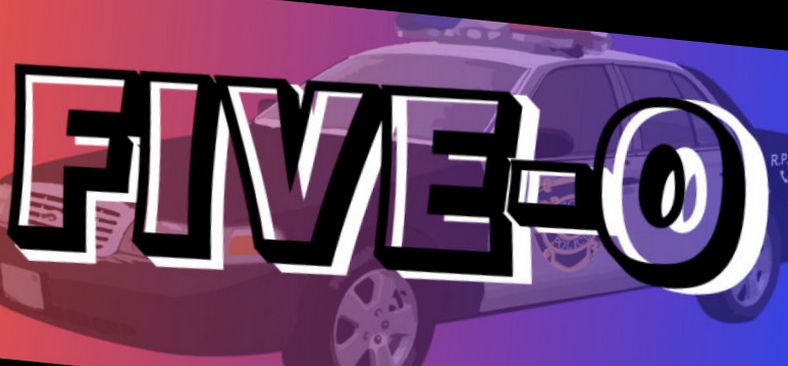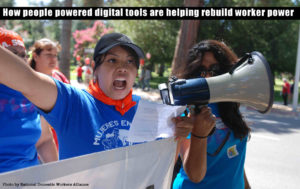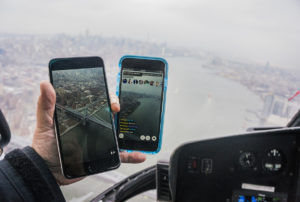The American Civil Liberties Union of Missouri wants to catch police misconduct in the act. Last fall, they released the Mobile Justice App to film and upload incident reports of alleged police misconduct. The app also lists your rights if and when confronted by the police.
ikely spiked by the unrest in Ferguson in late 2014, ACLU Missouri has already received 1,500 reports and 550 videos. One-by-one, volunteer attorneys comb through reports and videos for follow up and possible legal action. Justin Hansford, professor at St. Louis University School of Law, thinks that the Mobile Justice App is like having a civil rights attorney in your pocket.
While the Mobile Justice App provides a valuable service, it only tackles the systemic problem of police misconduct through possible litigation. For the ACLU, that makes perfect sense. However, recent outrage in the United States over numerous police-caused deaths of unarmed men is not going to be resolved solely through an adversarial processes like lawsuits.
Problems of intimidation by the police and poor communication between police and public need to be resolved through community movements. Two new apps, SWAT and Five-O, look to do just that by using technology to enhance community movements to end police misconduct.
The hurdle to holding police accountable is evident to Brandon Anderson, creator of SWAT App. “Going to a police station to file a complaint is inherently intimidating,” says Anderson. A 2011 Department of Justice report bolsters Anderson’s point. The report stated that only five percent of people with an issue regarding police misconduct actually filed an official complaint. To overcome the intimidation of going to a police station to officially complain about the police, SWAT will make filing digital. Like the ACLU app, there will also be a video and cloud storage feature for evidence collection.
“There needs to be an improved relationship between the community and police. I lost a friend to police violence, and I don’t want to bury another one of my friends. I think a lot of people feel the same.”
– Brandon Anderson, creator of the SWAT App
Apps Build Relationships and Empower Communities
Anderson’s vision for SWAT, however, is bigger than complaint filing and evidence collection. Anderson envisions a movement being built around the app. While the app files a complaint to the proper police department, it will also forward a copy to a local civil oversight committee. Anderson does not believe that technology will usurp on the ground movement building, but rather empower it through heightened connectivity and better information. He intends to organize these civil oversight committees to include local residents and community leaders. “Our mission is to amplify the voices in these communities,” says Anderson.
Similarly, in Georgia, there is a need to meld technology and movement building. Three high school siblings, Caleb, Ima, and Asha Christian, created Five-O to be a catalyst for conversation between police and community members. “Partnership policing is our movement,” explains Asha. She believes partnership policing can be attained through two-way communication between the police and community members.
Five-O, unlike SWAT, accepts incident reports that include both negative and positive interactions with police. What makes Five-0 wholly unique is its platform for community members and police to have a conversation.
While the most used feature of Five-O remains the incident report component, the siblings foresee their platform as a venue for increased neighborhood connectivity and police partnership. Built from their personal experiences watching family members struggle to talk about their interactions with the police, they see an unfilled need in their community. Further, they do not want to flame tensions between communities and police, instead they want to bridge them through constructive dialogue. To accomplish this, Five-O is expanding to eight cities this year with targeted outreach to bring police departments into the discussion.
Security and Training Needed
Even with the altruistic intentions of both apps, Shauna Dillavou, executive director of Community Red, warns that these apps could heighten danger for those using them. “There’s no clear training about [the app]; pulling a phone out around a cop could get people shot,” warns Dillavou.
There is precedent for this concern, the shooting of Levar Edward Jones in South Carolina and deaths of Rumain Brisbon in Arizona and Amadou Diallo in New York all took place when each unarmed, black man grabbed for an ID, medicine bottle, or wallet respectively. What is to stop a similar tragic outcome if someone were to grab his phone to film a police officer with his weapon drawn?
Anderson sees this as a reasonable concern, but this is why these apps so important. He is upfront with the fact that his target audience for SWAT is eighteen to thirty-five year old men of color, the population most likely to be on the receiving end of police misconduct. Through his own lived experience, Anderson knows how high stakes interactions with the police can be. “There needs to be an improved relationship between the community and police,” says Anderson. “I lost a friend to police violence, and I don’t want to bury another one of my friends. I think a lot of people feel the same.”
Categories:
tech, tools and tactics




